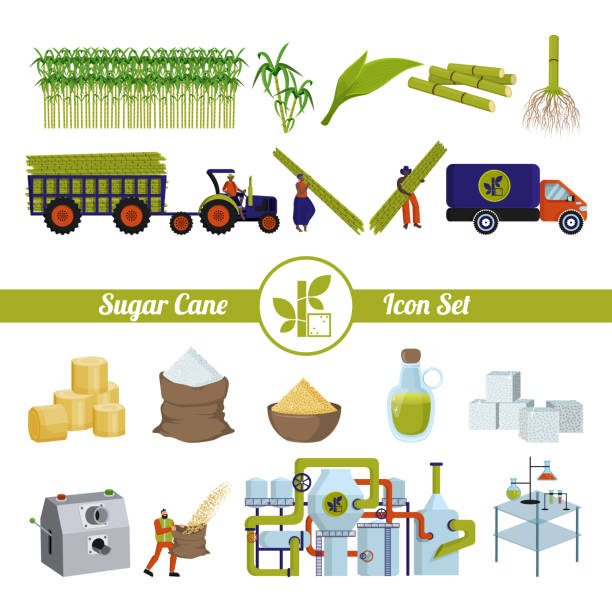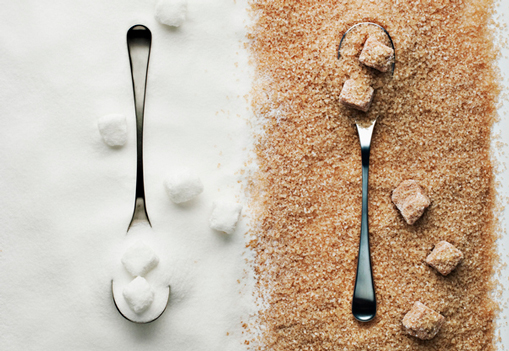Can sugar cane products Offer Health Benefits? Here’s the Truth
The Comprehensive Trip of Sugar Cane: Understanding Materials and Production Methods
The trip of sugar walking cane is a complex process that begins in tropical areas with ideal growing conditions. Cultivation practices are designed to make the most of yield and sustainability. Harvesting techniques range from conventional hands-on methods to contemporary mechanical strategies. After harvest, sugar cane undergoes various handling phases to transform it into granulated sugar. This exploration discloses not only the complexities of production however additionally the more comprehensive effects for international markets and the atmosphere. What exists past this first transformation?

The Background of Sugar Cane Farming
Although sugar walking cane farming days back hundreds of years, its beginnings can be traced to the tropical regions of Southeast Asia, where very early farmers initially acknowledged the plant's wonderful sap. This discovery resulted in the cultivation of sugar cane as a staple plant, slowly infecting India and the Center East. By the very first millennium AD, sugar cane was being cultivated in these areas, where methods for drawing out and refining sugar were developed.The plant acquired importance in Europe throughout the Crusades, as returning soldiers brought knowledge of sugar production back home. By the 15th century, the facility of sugar ranches started in the Caribbean, driven by the demand for sugar in Europe. The transatlantic slave labor sustained this growth, as enslaved labor was made use of to make the most of production. Over centuries, sugar walking cane cultivation progressed, affecting economies and societies worldwide, making it a substantial agricultural commodity.
Growing Conditions and Agricultural Practices
The effective farming of sugar cane relies heavily on specific expanding conditions and agricultural methods. Perfect temperature levels range between 20 to 32 levels Celsius, with well-distributed rains of 1,500 to 2,500 millimeters each year. Dirt top quality is essential; loamy or sandy dirts, abundant in raw material, advertise healthy and balanced growth.Farmers usually utilize different farming practices to enhance return. Plant turning and intercropping are common techniques to preserve dirt fertility and control parasites. Normal watering might be essential in drier areas, making certain that the plants obtain appropriate wetness. Fertilization, especially with nitrogen and potassium, is critical for robust growth.Pest and weed administration techniques, including incorporated pest management (IPM), help to reduce losses. Sustainable techniques, such as marginal husbandry and natural farming, are getting grip among producers to shield the environment. Collectively, these factors add considerably to the effective production of sugar walking cane.
Collecting Methods and Timing
In sugar cane production, the choice between guidebook and mechanical harvesting considerably impacts efficiency and return. Timing is likewise crucial, as harvesting at the excellent moment warranties maximum sugar web content and reduces losses. Recognizing these factors is crucial for effective sugar walking stick farming.
Manual vs. Mechanical Harvesting
Gathering sugar cane involves two key techniques: guidebook and mechanical, each with distinct benefits and obstacles. Manual harvesting, generally performed by laborers utilizing machetes, permits greater precision in reducing and lowers damage to the plant. It is typically preferred in areas with irregular terrain or where the crop is sprinkled with various other plants, as employees can browse these complexities better. Nonetheless, it is labor-intensive and lengthy. On the other hand, mechanical harvesting uses specialized makers to reduce and accumulate the walking stick rapidly, boosting effectiveness and minimizing labor prices. This technique is matched for large operations however can cause higher crop damages and soil compaction. Ultimately, the choice between guidebook and mechanical harvesting depends on numerous elements, including financial considerations and environmental conditions.
Ideal Harvesting Timing
Choosing the right moment to gather sugar cane significantly influences both yield and top quality. Ideal collecting commonly happens when the walking cane gets to full maturity, typically between 12 to 18 months after planting. At this stage, sucrose levels peak, making sure the ideal sugar removal prices. Weather also play an important function; gathering during completely dry periods can prevent damages to the walking cane and decrease dirt compaction. Furthermore, monitoring the plant's shade and leaf drop can indicate preparedness, as a yellowing of the fallen leaves suggests that the cane is ripe. Prompt harvesting is vital, as hold-ups can cause lowered sugar material and increased sensitivity to insects and diseases, eventually influencing general production efficiency.
Handling Methods: From Cane to Sugar
The handling of sugar cane entails crucial extraction techniques that divide the juice from the coarse plant material. Adhering to extraction, the refining procedure transforms the raw juice right into taken shape sugar, guaranteeing purity and top quality. Comprehending these methods is crucial for comprehending the trip of sugar from cane to final item.
Extraction Methods Review
Extraction methods play a substantial duty in transforming sugar walking cane into usable sugar. The cane is harvested and carried to refining facilities where it goes through comprehensive cleaning to eliminate impurities - sugar cane products. The following action entails crushing the walking stick utilizing hefty rollers, which releases the juice including sucrose. This juice is after that clarified via the addition of lime and heat, enabling contaminations to settle out. After information, the juice is vaporized under regulated temperature levels to concentrate the sugar material. Consequently, formation occurs, where sugar crystals are formed as the concentrated juice cools. These strategies assure the reliable extraction of sugar while keeping the top quality needed for more processing. Understanding these techniques is necessary for understanding the general production of sugar from sugar walking cane
Refining Refine Explained
Refining sugar from the drawn out juice is a vital step that improves its purity and quality. This procedure involves several stages, starting with explanation. The juice is heated up and treated with lime and other agents to get rid of impurities, resulting in a clearer fluid. Next, the clarified juice undergoes dissipation, where water is eliminated to concentrate the sugar content. The concentrated syrup is after that crystallized by cooling, permitting sugar crystals to develop. These crystals are separated from the continuing to be syrup, recognized as molasses, with centrifugation. Lastly, the raw sugar is further improved with washing, purification, and drying, which eliminates any kind of staying contaminations. Completion item is the granulated sugar frequently used in homes and sectors worldwide, guaranteeing uniformity and sweetness.
Sustainable Practices in Sugar Cane Production
Although sugar cane production has actually typically relied upon intensive farming approaches, there is a growing focus on sustainable techniques that promote ecological wellness and financial feasibility. Farmers are increasingly embracing strategies such as plant rotation, which boosts dirt fertility and minimizes insect infestations. Integrated insect monitoring (IPM) is likewise obtaining traction, permitting all-natural predators to regulate pest populations, therefore reducing chemical pesticide use.In enhancement, innovations in irrigation approaches, such as drip watering, are being used to preserve water sources. Sustainable land administration techniques, consisting of decreased tillage, additional info aid prevent dirt erosion and maintain biodiversity. In addition, many producers are exploring natural farming approaches, which avoid synthetic fertilizers and chemicals completely, cultivating a healthier ecological community.
The International Sugar Market and Economic Influence
Lasting methods in sugar walking cane production not just profit the atmosphere but likewise affect the dynamics of the worldwide sugar market. As consumer demand shifts in the direction of morally generated items, nations embracing sustainable techniques acquire affordable advantages. This pattern triggers significant sugar merchants, such as Brazil and India, to incorporate environment-friendly techniques, therefore impacting global rates and supply chains.Moreover, variations in production as a result of climate adjustment and environmental policies can cause volatility in sugar prices, influencing economic climates reliant on sugar exports. As an example, regions that spend in lasting farming may experience improved return stability, bring about far better market positioning.Economic effects extend past private countries, as international trade contracts and tariffs form the competitive landscape. Eventually, the interaction between lasting methods and market characteristics highlights the relevance of adaptive techniques in a quickly changing economic atmosphere, influencing both producers and customers in the worldwide sugar market.
Advancements in Sugar Cane Usage and By-products

As the need for renewable energies expands, technologies in sugar cane use and by-products are transforming the farming landscape. Scientists and entrepreneurs are exploring novel applications that prolong past typical sugar production. One significant development is the conversion of bagasse, the fibrous residue left after juice extraction, into bioenergy and bioplastics (sugar cane products). This not just minimizes waste yet additionally provides sustainable energy choices for processing facilities.In addition, improvements in fermentation modern technology have actually brought about the production of biofuels, such as ethanol, from sugar walking cane, which contributes to cleaner power solutions. Additionally, the removal of molasses has actually opened opportunities for producing value-added products like animal feed and specialty spirits.These technologies not just improve the economic feasibility of sugar walking stick cultivation yet also promote environmental sustainability, making sugar cane an essential plant in the change towards a circular economy. The Check Out Your URL ongoing expedition of its prospective continues to yield appealing results
Regularly Asked Inquiries
What Are the Health And Wellness Effects of Consuming Sugar Cane Products?
The health results of consuming sugar walking cane products can vary. While they supply power and vital nutrients, extreme intake may cause weight gain, enhanced blood glucose degrees, and a greater risk of oral problems. Small amounts is essential.
Exactly How Does Climate Change Effect Sugar Cane Production?
Climate change considerably affects sugar cane production by changing rains patterns and enhancing temperature levels. These changes can cause reduced returns, increased bug stress, and difficulties in preserving soil health, inevitably affecting both top quality and amount of harvests.
What Is the Role of Sugar Cane in Biofuel Production?
The duty of sugar walking stick in biofuel production is substantial; it serves as a renewable resource source, converting sugars right into ethanol. This procedure reduces reliance on nonrenewable fuel sources and aids mitigate greenhouse gas discharges, advertising ecological sustainability.

Exist Any Kind Of Different Sugar Stemmed From Sugar Cane?
Different sugar stemmed from sugar walking stick include molasses and cane sugar itself. These products give sweetening alternatives while maintaining some nutritional advantages, making them popular options for customers seeking natural alternatives to synthetic sweeteners.
Exactly How Does Sugar Cane Farming Affect Local Communities?
Sugar walking cane farming greatly effects local communities by giving work possibilities, enhancing i loved this neighborhood economies, and influencing social frameworks. It can likewise lead to ecological concerns and health and wellness concerns, demanding a well balanced technique to lasting techniques - sugar cane products.